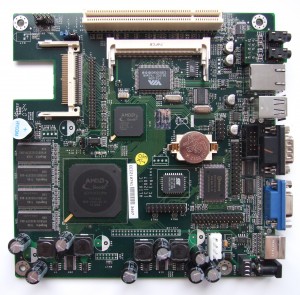Computer memory problems include faulty RAM installation, damaged memory modules, and incompatible memory. A computer’s memory can be the reason it is not starting up or other various problems. Follow the steps below to fix a memory problem:

image courtesy of wikimedia commons
Instructions:
- Back up all data that is on the computer with the memory problem. The computer has become unstable and might be putting the hard drive at risk. In the event of a malfunction during troubleshooting, the back up contains everything.
- Install a new RAM stick into the computer. This will allow the user to test how the computer handles an increase in memory. If the computer does not identify the new RAM make sure the RAM meets the specifications of the motherboard.
- After installing any new modules check to make sure Windows uses the new memory. Right click on “My Computer” and select “Properties.” In the “General” tab scroll down to find the amount of RAM. If Windows successfully detected the new RAM it will show an increase in the total RAM.
- Turn the computer off. Unplug all cables from the computer. Open the computer casing and find the memory slots on the motherboard.
- The memory slot should unlock and the memory stick will be available for removal. Take the memory out and inspect it for any damage. Look for scratches, scrapes, bent hardware, and burns. Using a damp cloth, wipe the metal contacts on the RAM module. Dry the modules and put the memory back into the RAM slots. Close the case.
Slow computer syndrome can be remedied and your slow computer can be fast again by installing new memory as a part of free basic computer maintenance. Make sure the memory pins match the motherboard specifications and the new modules should work correctly. Optimize a PC by adding new memory and looking for memory leaks. Installing more RAM can fix speed issues but sometimes this is not the case. Windows operating systems can only utilize a certain amount of RAM and cannot use any more. For example: Installing 8GB of RAM on a Windows XP computer. Windows XP can only use 3GB of RAM, so 5GB are going to waste. Upgrading other hardware components can be just as important if not more important than adding RAM. Computer memory problems can be fixed easily with the right tools and a patient mind.
